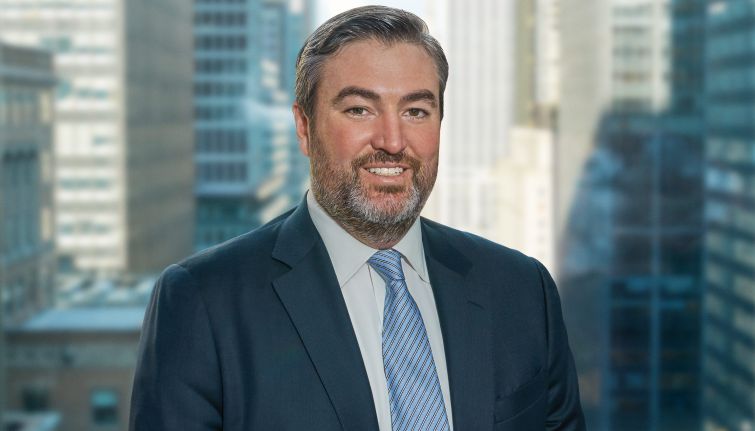Lument CEO Jim Flynn Talks Multifamily Outlook Amid Higher Interest Rates
By Andrew Coen September 18, 2023 1:00 pm
reprints
Jim Flynn played an instrumental role in the creation of Lument during the height of the COVID-19 pandemic and now is looking to guide the commercial real estate lending platform through more storm clouds.
Lument was created in 2020 following Orix USA’s acquisition of Hunt Real Estate Capital, where Flynn had been president and chief investment officer for more than three years. Flynn was tapped to create the Lument brand in early 2020 after helping to grow Hunt’s annual originations by 80 percent and its servicing portfolio by over $3 billion.
Since the Lument brand became official in November 2020 eight months into the pandemic, Flynn has helped grow its servicing portfolio in excess of $50 billion and total annual transactions to nearly $16 billion, focusing largely on multifamily, affordable housing and health care deals.
Flynn, a Rhode Island native, spoke with Commercial Observer in August about his path from being a real estate attorney to CRE finance, the challenges of launching Lument during a global health crisis, the decision to expand into investment sales, and his outlook for the multifamily market in a higher interest rate environment.
The interview has been edited for length and clarity.
Commercial Observer: Where did you grow up and what was your path into commercial finance?
James Flynn: I grew up in Rhode Island. I spent my whole childhood through high school there, and I still have a lot of family there. I went to college at Georgetown and then came to New York and worked at Lehman Brothers in San Francisco on the investment banking side around the middle of the tech bubble, and was also there for it bursting. When I left Lehman, things were a little up in the air, particularly in that part of the country, so many people were going back to school and trying to figure out what they were going to do. I wanted to be an investment banker and on the buy side. My dad was involved with real estate in Rhode Island working with developers, and that made me realize that real estate was an asset class that I understand. In between all those thoughts, 9/11 happened, which threw a whole different perspective on what you’re going to do. I ended up going to law school, since with my finance and accounting degrees people I knew said if I got a law degree that would serve me well in real estate.
I got my JD from Columbia and really focused on real estate. I moved back to California to L.A. to work for a pretty large law firm, Gibson Dunn & Crutcher, in its real estate group. I didn’t expect to be a lawyer as my career and go through the partner track and all those things, but it was a good experience and stepping stone. In 2007 after a few years [in that role] I started to get a little restless and decided it was time to take that next step, which was to move back to finance for professional and personal reasons, and I thought moving back to New York made more sense.
I started looking for real estate opportunities and ultimately settled on what at the time was called CharterMac, which was a company started by [Related Companies’] Stephen Ross, which is really why I ended up choosing that one. This was the middle of 2007, and shortly thereafter was the next crash and next crisis. I spent the next two or three years doing a lot of corporate real estate-related workout activity, and that was another great learning experience.
Tell us about your path that ultimately led to becoming CEO of Lument?
In 2010, CharterMac was sold and I made the decision to move positions and stay with the remaining company. The company that was sold was the startup of special servicing agent C-III Capital Partners. I stayed with the remainder of the business and ended up running their asset management and REO groups and special servicing, and ultimately led the affordable housing group there. In 2013 while continuing to move myself further toward the investment side of the business, which is what I had come back to do, our division was again sold, and this time the Hunt Group was the suitor and I developed a relationship with Chris Hunt and the Hunt family. I ultimately started the non-agency lending business at Hunt, which I ran from 2014 to 2020, and then it was sold to Orix. The strategy with Orix was to take the Hunt platform and combine it with Red Capital, Lancaster Pollard and other real estate entities from Orix into one platform, which we renamed Lument in November 2020.
What were some of the challenges of launching Lument during the height of the COVID-19 pandemic?
The obvious challenge was we were acquired in January 2020 and [stay-at-home orders] for COVID began on March 13, so we had only been together in the office for a couple of months and most people hadn’t even met each other. You had a brand-new company, and the entire rebranding and launch of the platform happened from a remote environment. It was a very odd dynamic and we tried to streamline the company into one unit all in a remote environment. When I look back at it I think we did a really good job, and the market cooperated. It was challenging from a management perspective, but I think all of the people involved embrace this new world.
What is your outlook for multifamily lending in the near term?
Transaction volume has certainly been significantly down in 2023. I’d like to say there’ll be some modest improvements [in the fourth quarter] in terms of transactions, but I don’t think it’s a return to normalcy. I think rates have stayed higher than certainly people thought they were going to be, going back several quarters.
People are looking at elevated interest rates relative to where they were. They’re in the middle toward maybe the lower end and middle of what is a normal environment. We’re still in a discovery period, but there still is this bid-ask spread between buyers and sellers that has not narrowed enough to get transactions rolling. You have an awful lot of short-term floating-rate debt that has been used to finance the multifamily market over the last five-plus years, and those loans are going to need to be refinanced, and they’re likely going to need equity.
I think we’re going to start to see that pickup in necessary activity toward the end of this year into next, and then you should also expect to see some narrowing of the bid-ask spread between buyers and sellers. Stability is the biggest issue but there is an awful lot of debt that’s maturing over the next several years that is going to need to be dealt with and refinanced in some fashion.
You execute a lot of loans backed by Fannie Mae and Freddie Mac. How is the higher interest rate environment impacting agency deals?
Fannie and Freddie loans are down reasonably significantly year-over-year, which is unusual. We haven’t seen that kind of decline in recent history. They’ve tightened their standards, but really it’s about whether deals work or not, and they are just harder to pencil with the increase in rates along with the increase in labor costs. While we do expect to see rental growth, it’s unsustainable for the growth levels to stay at the same levels that they’ve been at in the past.
Some of those assets that used financing at rates that were very low are finding it hard to pencil to their permanent financing, which Fannie and Freddie are known for and so there’s just a big gap and that has had an impact on the velocity of transactions that are able to get done. In terms of the deals that Fannie and Freddie have been looking at it’s as high as it’s ever been, but finding the ones that actually work and then also making sure that you have willing parties on both sides of the transaction, if it’s a sale, has clearly been slower in 2023 than we’ve seen for some time.
What are you seeing on a national level in terms of demand for multifamily?
There is still a significant supply demand imbalance in the U.S., whether it’s single-family or multifamily. Single-family home sales are down, and that’s a reflection in part due to interest rates. On the multifamily side, affordability is a major issue and there’s not enough new housing being built that’s affordable in particular. In markets that have been hot over the last several years you have a fair amount of inventory that is coming online this year and 2024, and then you’re going to see another slowdown because there has been a slowdown in construction starts. But while those markets are going to see a relatively high percentage of their inventory come online in new stock, it’s likely to be absorbed. It might take a few quarters longer than in a normal environment because they built so much, like the Austins of the world. It’s still a highly desirable area with a lot of inflow of people who want to live there, so over a reasonable period there shouldn’t be any issue.
In most markets there is still just not enough housing, period. Does that mean everything’s perfect? No, because people still need to be able to afford to pay their rent, and if you are an owner you still need to be able to maintain your property, and if labor costs and supply costs are elevated it’s harder to do that or things get delayed. There are things that the industry will have to deal with including the significant amount of debt that’s coming due on the floating-rate side, but overall, demographically, there’s still a greater demand than there is a supply nationally.
Speaking of individual markets: There have been migration trends toward Sun Belt markets during the pandemic, but there’s been a lot of concern about extreme weather issues lately, especially in areas like Florida. How has that impacted multifamily demand?
There are two impacts. One, from a cost standpoint the biggest impact is insurance, which has become a major issue for owners and lenders and all participants. Insurance is just difficult to find, period, and then when you do find it the cost is not measured in percentages, it’s measured in multiples of what it was in terms of the increase. It has significantly impacted investment in those areas. It’s usually the last thing that comes in when you’re looking at acquisition or financing because it has such a dramatic impact on the overall income. So, that is a major issue certainly in Florida and the Gulf Coast in Texas.
Last, explain the goal behind your recent decision to broaden the scope of the firm by adding an investment sales component?
Our view of the overall real estate lending market is that owners and investors are looking for partners that are able to offer a wide range of products and services. Certainly in the multifamily space, investment sales and lending have become more closely aligned than historically. A lot of owners like the option to have a relationship with a sales broker where the firm can also source them debt for an acquisition, so that is a market norm that has become accepted. But I also think that, particularly in a high interest rate market like this, there are expectations around being able to offer other products like bridge financing or mezzanine or preferred equity and being able to provide a full spectrum of all your available capital sources. Or, on the service side, letting them know what they need from start to finish to execute on a transaction.I think that’s important, and it’s going to be expected with a lot of industries and a lot of different areas we deal with on a day-to-day basis. Real estate lending is no different as people expect more from their partners.
Andrew Coen can be reached at acoen@commercialobserver.com


